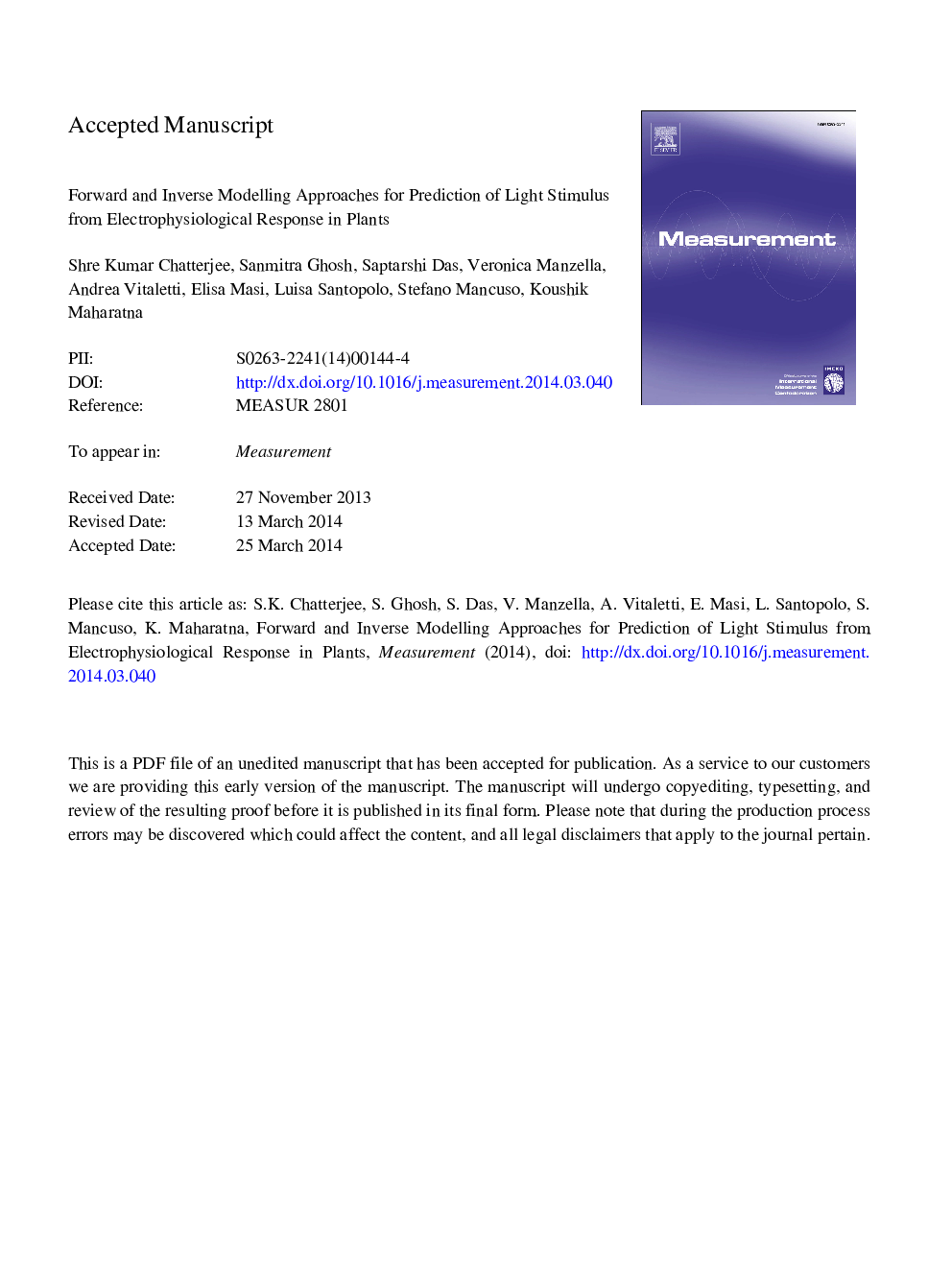| Article ID | Journal | Published Year | Pages | File Type |
|---|---|---|---|---|
| 7125224 | Measurement | 2014 | 27 Pages |
Abstract
In this paper, system identification approach has been adopted to develop a novel dynamical model for describing the relationship between light as an environmental stimulus and the electrical response as the measured output for a bay leaf (Laurus nobilis) plant. More specifically, the target is to predict the characteristics of the input light stimulus (in terms of on-off timing, duration and intensity) from the measured electrical response - leading to an inverse problem. We explored two major classes of system estimators to develop dynamical models - linear and nonlinear - and their several variants for establishing a forward and also an inverse relationship between the light stimulus and plant electrical response. The best class of models are given by the Nonlinear Hammerstein-Wiener (NLHW) estimator showing good data fitting results over other linear and nonlinear estimators in a statistical sense. Consequently, a few set of models using different functional variants of NLHW has been developed and their accuracy in detecting the on-off timing and intensity of the input light stimulus are compared for 19 independent plant datasets (including 2 additional species viz. Zamioculcas zamiifolia and Cucumis sativus) under similar experimental scenario.
Related Topics
Physical Sciences and Engineering
Engineering
Control and Systems Engineering
Authors
Shre Kumar Chatterjee, Sanmitra Ghosh, Saptarshi Das, Veronica Manzella, Andrea Vitaletti, Elisa Masi, Luisa Santopolo, Stefano Mancuso, Koushik Maharatna,
